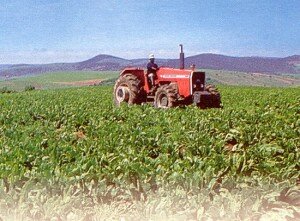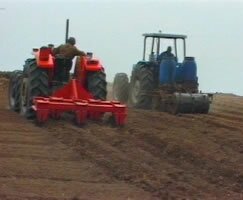History of Farming
One day in 1865 Mr Charles Purdon entering a barber’s shop in Grahamstown in the Eastern Cape was taken by some pineapples which had come from Natal. The barber, Mr Lindsay Green gave him some of the pineapple crowns (or tops) and this was the beginning of what is today one of South Africa’s and the Eastern Cape’s largest industries – pineapple growing.
It is sometimes contended that Jan van Riebeeck first introduced pineapples into the country in 1665,while others claim that the first pineapple plants came from Ceylon and were planted in Natal which is still a large pineapple producing area but the Eastern Cape (especially the Bathurst area) pineries have developed far beyond Natal in the quantity and quality of fruit produced. The Bathurst area alone delivers over 135 000 tons annually to the factory in East London.
There a two varieties of pineapples commercially grown in South Africa, the smooth leaf Cayenne and the Queen. The Cayenne is the largest crop and is the only variety suitable for canning. It is very much larger and has a lot of juice.
The pineapple grows on the central stem of the plant with only one fruit borne on each plant. Every plant produces suckers and these grow in a leaf axil off the parent stem. These suckers subsequently produce a second or “ratoon” crop of fruit. The first and second crops normally constitute the commercial yield of a plant
In South Africa, pineapples flower within 14 to 20 months of planting. Summer fruit take about five months to mature and winter fruit can take up to seven months. The first ratoon crop is usually harvested after 18 to 24 months and the two crop cycle can take up to four years. Land for pineapple farming is chosen on the basis of elevation, aspect, soil and drainage. The amount of fertilizer needed for maximum yield is determined by regular soil and leaf analysis.

Good crop management aims to achieve maximum production of fruit per hectare in the shortest possible time without harming the environment. The timing of the fruiting of the first crop is very important as it influences the sucker growth of the second crop. Fruit is induced to ripen for factory demand by using a “ripening forcer” so as to ensure uniform ripening at the optimum time for canning. All farms in the area have been audited and accredited by the international “Good Agricultural Practices Act” (GAP) Quality control procedures are in place at every stage of pineapple operations from the farms where the fruit is picked, to the factory where it is processed and distributed. On the farm, quality control starts with the selection of variety, adoption of agronomic advice regarding best practices, attention to location, soil type, time of harvesting and expedient product delivery.




Leave a Reply
You must be to post a comment.